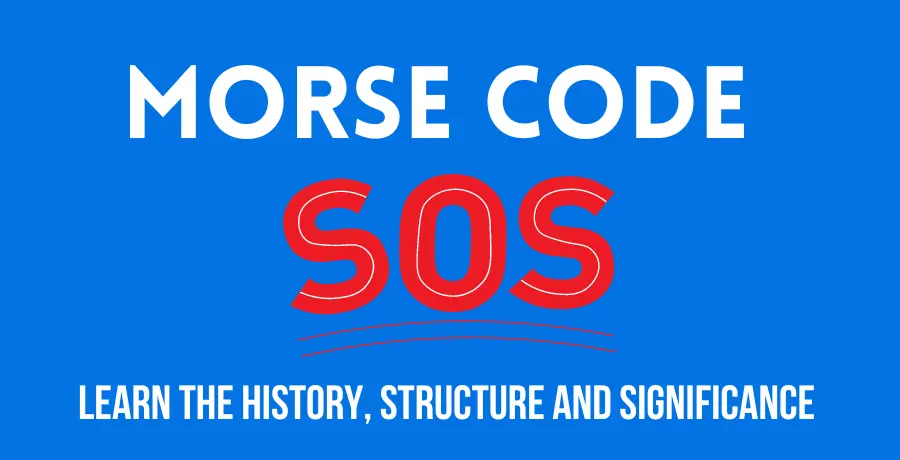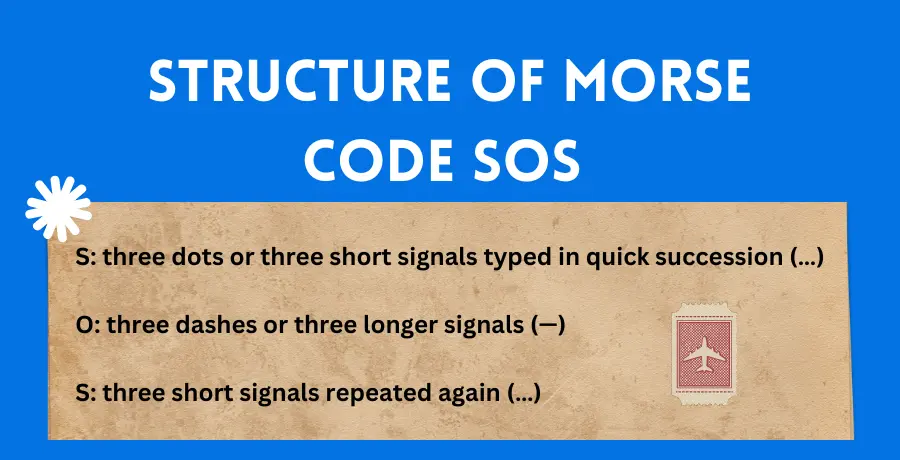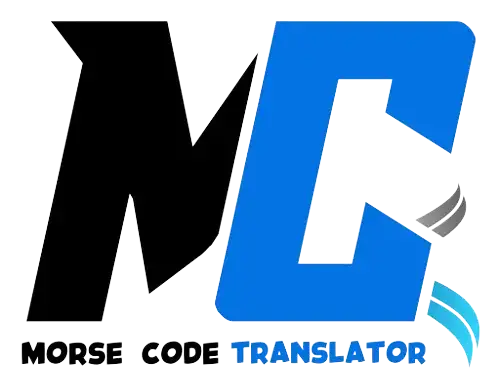Morse Code SOS | Learn the History, Structure and Significance
One of the most renowned morse code message is SOS which is a message for distress and for help. Morse code SOS has its own structure, history and significance that needs to be decoded. But first let’s Understand the morse code itself.
Morse code is a method of message transmission in which a whole message is transmitted using the combination of Dashes, dots and punctuation marks. In the past when the long-distance communication was not easy, Alfred Samuel developed morse code in 19th century. The signals of message were transmitted through telegraph. This way of communication revolutionised and was soon used everywhere.
…—…
Historical significance of Morse Code SOS
The history of using SOS morse code as a distress call and message for help goes back to 20th century. SOS, which is also known as save our souls or save our ship (despite many ideas it does not stand for anything) was chosen due to its simplicity. The signal was first introduce in 1906. Later in 1908 it became international distress signal. Earlier CQD was used for the help by the Marconi Company, which was also abbreviated into “come quickly, distress”. But this code lacked uniformity and was often misunderstood Which caused delays for the help from the rescue team. Finally, SOS due to its Unique combination of dots and dashes was chosen as the Morse code for help.

Today Despite the invention of Modern Talking technology, SOS still used as an universal signal for help. This is because it is easy to understand, and it transcends cultural and language barrier. It is used in many departments such as aviation, maritime and Wilderness rescue operations.
Structure of Morse code for SOS
SOS in Morse code consist of 3 dots in the beginning, in the end and 3 dashes in the middle. It is written without any space and therefore is concise way of sending an urgent message. Due to its simplicity its recognisable in challenging conditions too.
- S: three dots or three short signals typed in quick succession (…)
- O: three dashes or three longer signals (—)
- S: three short signals repeated again (…)

Significance of SOS Morse Code
- Universal recognition: The famous SOS is universally accepted and recognised across different cultures and languages. Many people make Morse Code Tattoos in their body. The sequence of dots and dashes remain synonymous to help no matter what language used. If you do not know how to read Morse code then you are not alone, millions of people learn it every year. This code is transmitted through radio, telegraph or through visual signals it transcends every barrier and unites the humanity.
- Power of repetition: the principle of repetition in Morse SOS distress signal is central to its structure. The triple repetition of the elements serves as a purpose of clarity and urgency which removes any misunderstanding and ambiguity which might be there.
Conclusion
Morse code SOS is universally understood and accepted way of asking for help. It’s simple combination of three dots and three dashes make it easy and fast to be transmitted. It has been used since 20th century and is still a well-known way of distress message. SOS morse structure consists of three dots (short signals), then three dashes (long signals) and finally three dots (short signals) again. Therefore, morse code for help is typed as “…—…”.
FAQs
Q: What is the morse code for help?
Ans: Morse code for help also known as SOS is three dots followed by three dashes and then three dots again …—…
Q: Why is SOS used for help?
Ans: SOS morse code is used for help message due its clear structure and ease of transmission.
Q: When was SOS first used?
Ans: SOS signal was first used in 1908 by Berlin Radio Convention.
